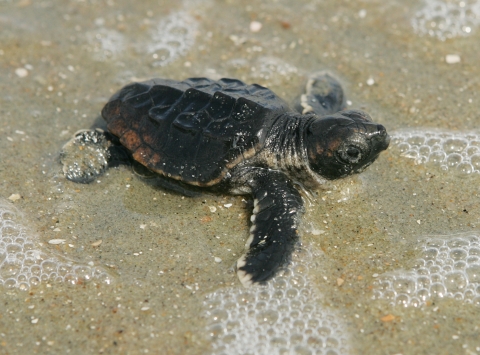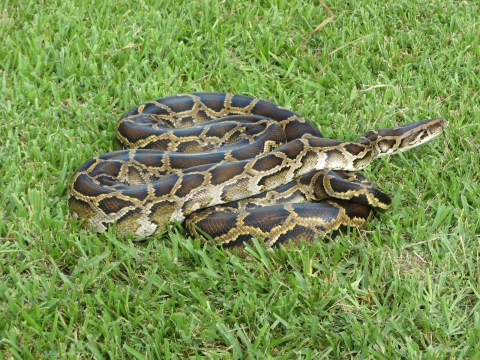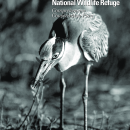What We Do
Refuges strive for biological integrity, diversity and environmental health. Much of the management work of Refuges is to maintain, enhance, or restore intact and self-sustaining habitats.
Sea Turtle Management
Sea turtles are iconic at many beaches throughout the United States, including those of Southwest Florida and Ten Thousand Islands National Wildlife Refuge. The US Fish and Wildlife Service actively works to protect sea turtles and their nests to ensure that future generations get to experience these unique animals as well as to maintain biodiversity within the world’s oceans. At Ten Thousand Islands National Wildlife Refuge, sea turtle nesting activity has been monitored since 1991. Today’s biologists continue to monitor the presence of sea turtles, their summer nesting activity, and perform hatch assessments to increase our understanding of and conservation efforts for the sea turtles that feed in our waters and nest on our beaches.
Invasive Species Management
One of Ten Thousand Islands National Wildlife Refuge’s most important management responsibilities is to control invasive species invasive species
An invasive species is any plant or animal that has spread or been introduced into a new area where they are, or could, cause harm to the environment, economy, or human, animal, or plant health. Their unwelcome presence can destroy ecosystems and cost millions of dollars.
Learn more about invasive species that threaten its naturally balanced ecosystem. When an invasive species is first introduced into a new area there may be a chance to eradicate it through rapid response action if the species is detected in time. If eradication is not possible then the species may be subject to control and management efforts. Regardless of whether the goal is total eradication or control, there are a suite of options to consider depending upon the species. When making decisions on which options to use, the refuge applies an Integrated Pest Management approach to choose which will be the most environmentally sound yet effective method for reducing the spread and impacts of the invasive species as much as possible. U.S. Fish and Wildlife Service Integrated Pest Management is a comprehensive, environmentally sensitive approach to managing pests that includes a combination of strategies that pose the least hazard to people, property, and the environment. The simple philosophy is that control will be more effective, and resistance will be less likely to build up, when a range of measures is deployed against a pest.
Fire Management
In Florida, fire is an important part of the natural ecology of many vegetation communities, such as pinelands and wet prairies. Fire is needed to maintain these communities and prevent the encroachment of invasive shrubs such as wax myrtle and willows. Fire also reduces the hazardous buildup of debris and dead vegetation which can fuel wildfires. The Southwest Florida Gulf Coast Refuge Complex utilizes fire to maintain healthy native vegetation communities on the refuge. Fire is set under "prescribed" conditions. These prescribed burns are only conducted if the winds, temperature, humidity and moisture levels are within a designated range and the refuge has adequate staff and equipment.
Management and Conservation
Law Enforcement
Law Enforcement is critical to every aspect of wildlife conservation. The mission of the Law Enforcement program is to support the administration of the National Wildlife Refuge System through management and protection of natural, historical, and cultural resources, property, and people on lands and waters of our National Wildlife Refuges.




